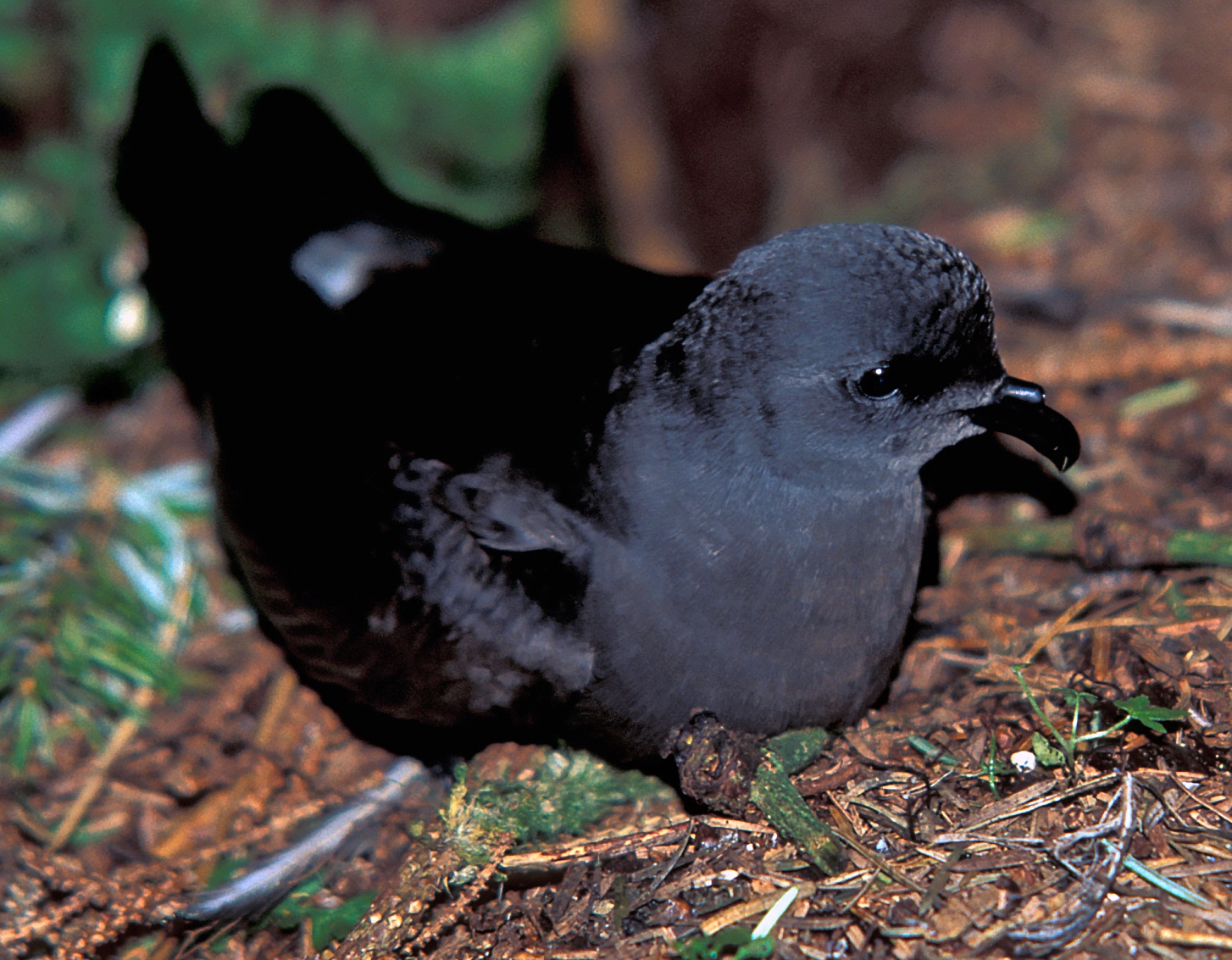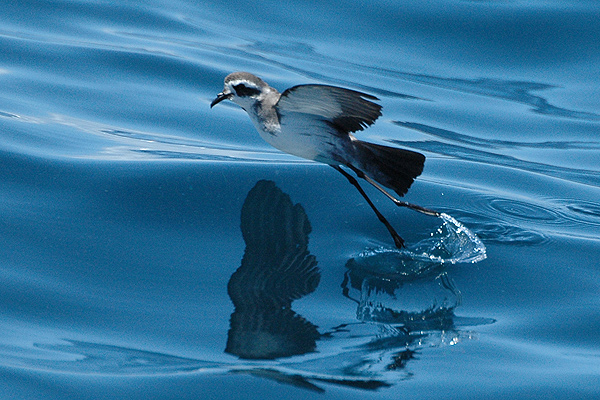|
Hydrobatidae
Northern storm petrels are seabirds in the genus ''Hydrobates'' in the family Hydrobatidae, part of the order Procellariiformes. The family was once lumped with the similar austral storm petrels in the combined storm petrels, but have been split, as they were not closely related. These smallest of seabirds feed on planktonic crustaceans and small fish picked from the surface, typically while hovering. Their flight is fluttering and sometimes bat-like. The northern storm petrels are found in the Northern Hemisphere, although some species around the Equator dip into the south. They are strictly pelagic, coming to land only when breeding. In the case of most species, little is known of their behaviour and distribution at sea, where they can be hard to find and harder to identify. They are colonial nesters, displaying strong philopatry to their natal colonies and nesting sites. Most species nest in crevices or burrows, and all but one species attend the breeding colonies nocturnal ... [...More Info...] [...Related Items...] OR: [Wikipedia] [Google] [Baidu] |
Procellariiformes
Procellariiformes is an order of seabirds that comprises four families: the albatrosses, the petrels and shearwaters, and two families of storm petrels. Formerly called Tubinares and still called tubenoses in English, procellariiforms are often referred to collectively as the petrels, a term that has been applied to all members of the order,Warham, J. (1996). ''The Behaviour, Population, Biology and Physiology of the Petrels''. London: Academic Press, or more commonly all the families except the albatrosses.Brooke, 2004. They are almost exclusively pelagic (feeding in the open ocean), and have a cosmopolitan distribution across the world's oceans, with the highest diversity being around New Zealand. Procellariiforms are colonial, mostly nesting on remote, predator-free islands. The larger species nest on the surface, while most smaller species nest in natural cavities and burrows. They exhibit strong philopatry, returning to their natal colony to breed and returning to th ... [...More Info...] [...Related Items...] OR: [Wikipedia] [Google] [Baidu] |
Guadalupe Storm Petrel
The Guadalupe storm petrel (''Hydrobates macrodactylus'') is a small seabird of the storm petrel family Hydrobatidae. It has been assessed as Critically Endangered or possibly extinct. Taxonomy It was formerly defined in the genus '' Oceanodroma'' before that genus was synonymized with '' Hydrobates''. Description and ecology This species was almost indistinguishable from its relative, Leach's storm petrel. In the field, they could not be told apart except by their annual rhythm. In the hand, the Guadalupe storm petrel could be distinguished by slightly larger size and the paler underwing coverts. There is no evidence for sexual dimorphism in this species. It bred only on Guadalupe Island off Baja California, Mexico, and presumably ranged throughout the region. The breeding season was set between the two other breeding storm petrel species of Guadalupe, the winter-breeding Ainley's and the summer-breeding Townsend's, in accordance with Gause's law. The single egg, ... [...More Info...] [...Related Items...] OR: [Wikipedia] [Google] [Baidu] |
European Storm Petrel
The European storm petrel, British storm petrel, or just storm petrel (''Hydrobates pelagicus'') is a seabird in the northern storm petrel family, Hydrobatidae. The small, square-tailed bird is entirely black except for a broad, white rump and a white band on the under wings, and it has a fluttering, bat-like flight. The large majority of the population breeds on islands off the coasts of Europe, with the greatest numbers in the Faroe Islands, United Kingdom, Ireland, and Iceland. The Mediterranean population is a separate subspecies, but is inseparable at sea from its Atlantic relatives; its strongholds are Filfla Island (Malta), Sicily, and the Balearic Islands. The storm petrel nests in crevices and burrows, sometimes shared with other seabirds or rabbits, and lays a single white egg, usually on bare soil. The adults share the lengthy incubation and both feed the chick, which is not normally brooded after the first week. This bird is strongly migratory, spending the Nort ... [...More Info...] [...Related Items...] OR: [Wikipedia] [Google] [Baidu] |
Austral Storm Petrel
Austral storm petrels, or southern storm petrels, are seabirds in the family Oceanitidae, part of the order Procellariiformes. These smallest of seabirds feed on planktonic crustaceans and small fish picked from the surface, typically while hovering. Their flight is fluttering and sometimes bat-like. Austral storm petrels have a cosmopolitan distribution, being found in all oceans, although only Wilson's storm petrels are found in the Northern Hemisphere. They are almost all strictly pelagic, coming to land only when breeding. In the case of most petrel species, little is known of their behaviour and distribution at sea, where they can be hard to find and harder to identify. They are colonial nesters, displaying strong philopatry to their natal colonies and nesting sites. Most species nest in crevices or burrows, and all but one species attend the breeding colonies nocturnally. Pairs form long-term monogamous bonds and share incubation and chick-feeding duties. Like many spe ... [...More Info...] [...Related Items...] OR: [Wikipedia] [Google] [Baidu] |
Seabird
Seabirds (also known as marine birds) are birds that are adapted to life within the marine environment. While seabirds vary greatly in lifestyle, behaviour and physiology, they often exhibit striking convergent evolution, as the same environmental problems and feeding niches have resulted in similar adaptations. The first seabirds evolved in the Cretaceous period, and modern seabird families emerged in the Paleogene. In general, seabirds live longer, breed later and have fewer young than other birds do, but they invest a great deal of time in their young. Most species nest in colonies, which can vary in size from a few dozen birds to millions. Many species are famous for undertaking long annual migrations, crossing the equator or circumnavigating the Earth in some cases. They feed both at the ocean's surface and below it, and even feed on each other. Seabirds can be highly pelagic, coastal, or in some cases spend a part of the year away from the sea entirely. Seabirds ... [...More Info...] [...Related Items...] OR: [Wikipedia] [Google] [Baidu] |
Storm Petrel (Hydrobates Pelagicus) (W1CDR0001395 BD7)
Storm-petrel may refer to one of two bird families, both in the order Procellariiformes, once treated as the same family. The two families are: *Northern storm petrels (''Hydrobatidae'') are found in the Northern Hemisphere, although some species around the Equator dip into the south. * Southern storm-petrels (Oceanitidae) are found in all oceans, although only white-faced storm petrel The white-faced storm petrel (''Pelagodroma marina''), also known as white-faced petrel is a small seabird of the austral storm petrel family Oceanitidae. It is the only member of the monotypic genus ''Pelagodroma''. Description The white-face ... (breeding in the North Atlantic, in addition to the Southern Ocean) and Wilson's Storm-petrels (on migration) are found in the Northern Hemisphere. {{SIA Set index articles on animal common names ... [...More Info...] [...Related Items...] OR: [Wikipedia] [Google] [Baidu] |
International Code Of Zoological Nomenclature
The International Code of Zoological Nomenclature (ICZN) is a widely accepted convention in zoology that rules the formal scientific naming of organisms treated as animals. It is also informally known as the ICZN Code, for its publisher, the International Commission on Zoological Nomenclature (which shares the acronym "ICZN"). The rules principally regulate: * How names are correctly established in the frame of binominal nomenclature * Which name must be used in case of name conflicts * How scientific literature must cite names Zoological nomenclature is independent of other systems of nomenclature, for example botanical nomenclature. This implies that animals can have the same generic names as plants (e.g. there is a genus ''Abronia'' in both animals and plants). The rules and recommendations have one fundamental aim: to provide the maximum universality and continuity in the naming of all animals, except where taxonomic judgment dictates otherwise. The code is meant to guide on ... [...More Info...] [...Related Items...] OR: [Wikipedia] [Google] [Baidu] |
Louis Jean Pierre Vieillot
Louis Pierre Vieillot (10 May 1748, Yvetot – 24 August 1830, Sotteville-lès-Rouen) was a French ornithologist. Vieillot is the author of the first scientific descriptions and Linnaean names of a number of birds, including species he collected himself in the West Indies and North America and South American species discovered but not formally named by Félix de Azara and his translator Sonnini de Manoncourt. He was among the first ornithologists to study changes in plumage and one of the first to study live birds. At least 77 of the genera erected by Vieillot are still in use. Biography Vieillot was born in Yvetot. He represented his family's business interests in Saint-Domingue (Haiti) on Hispaniola, but fled to the United States during the Haitian rebellions that followed the French Revolution. On Buffon's advice, he collected material for the ''Histoire naturelle des oiseaux de l'Amérique Septentrionale,'' the first two volumes of which were published in France beginn ... [...More Info...] [...Related Items...] OR: [Wikipedia] [Google] [Baidu] |
Côme-Damien Degland
Côme-Damien Degland (6 July 1787 – 1 January 1856, Lille) was a French physician and zoologist. Biography Degland was born at Armentières, and lived in Lille for most of his life, where he was the chief of the Hôpital Saint-Sauveur, and where he died. He participated in the founding of the Lille Natural History Museum, which owed much of its original zoological collection to purchases he made. He published a catalogue of the museums beetles in 1821, and a two-volume catalogue of the birds of France and Europe in 1849. With Zéphirin Gerbe, he was co-author of ''Ornithologie européenne, ou, Catalogue descriptif, analytique et raisonné des oiseaux observés en Europe'' (second edition, 1867). A bird species, the white-winged scoter The white-winged scoter (''Melanitta deglandi'') is a large sea duck. The genus name is derived from Ancient Greek ''melas'' "black" and ''netta'' "duck". The species name commemorates French ornithologist Côme Damien Degland. Description The ... [...More Info...] [...Related Items...] OR: [Wikipedia] [Google] [Baidu] |
Threatened Species
Threatened species are any species (including animals, plants and fungi) which are vulnerable to endangerment in the near future. Species that are threatened are sometimes characterised by the population dynamics measure of ''critical depensation'', a mathematical measure of biomass related to population growth rate. This quantitative metric is one method of evaluating the degree of endangerment. IUCN definition The International Union for Conservation of Nature (IUCN) is the foremost authority on threatened species, and treats threatened species not as a single category, but as a group of three categories, depending on the degree to which they are threatened: *Vulnerable species * Endangered species * Critically endangered species Less-than-threatened categories are near threatened, least concern, and the no longer assigned category of conservation dependent. Species which have not been evaluated (NE), or do not have sufficient data ( data deficient) also are not conside ... [...More Info...] [...Related Items...] OR: [Wikipedia] [Google] [Baidu] |
Type Genus
In biological taxonomy, the type genus is the genus which defines a biological family and the root of the family name. Zoological nomenclature According to the International Code of Zoological Nomenclature, "The name-bearing type of a nominal family-group taxon is a nominal genus called the 'type genus'; the family-group name is based upon that of the type genus." Any family-group name must have a type genus (and any genus-group name must have a type species, but any species-group name may, but need not, have one or more type specimens). The type genus for a family-group name is also the genus that provided the stem to which was added the ending -idae (for families). :Example: The family name Formicidae has as its type genus the genus '' Formica'' Linnaeus, 1758. Botanical nomenclature In botanical nomenclature, the phrase "type genus" is used, unofficially, as a term of convenience. In the '' ICN'' this phrase has no status. The code uses type specimens for ranks up to ... [...More Info...] [...Related Items...] OR: [Wikipedia] [Google] [Baidu] |







